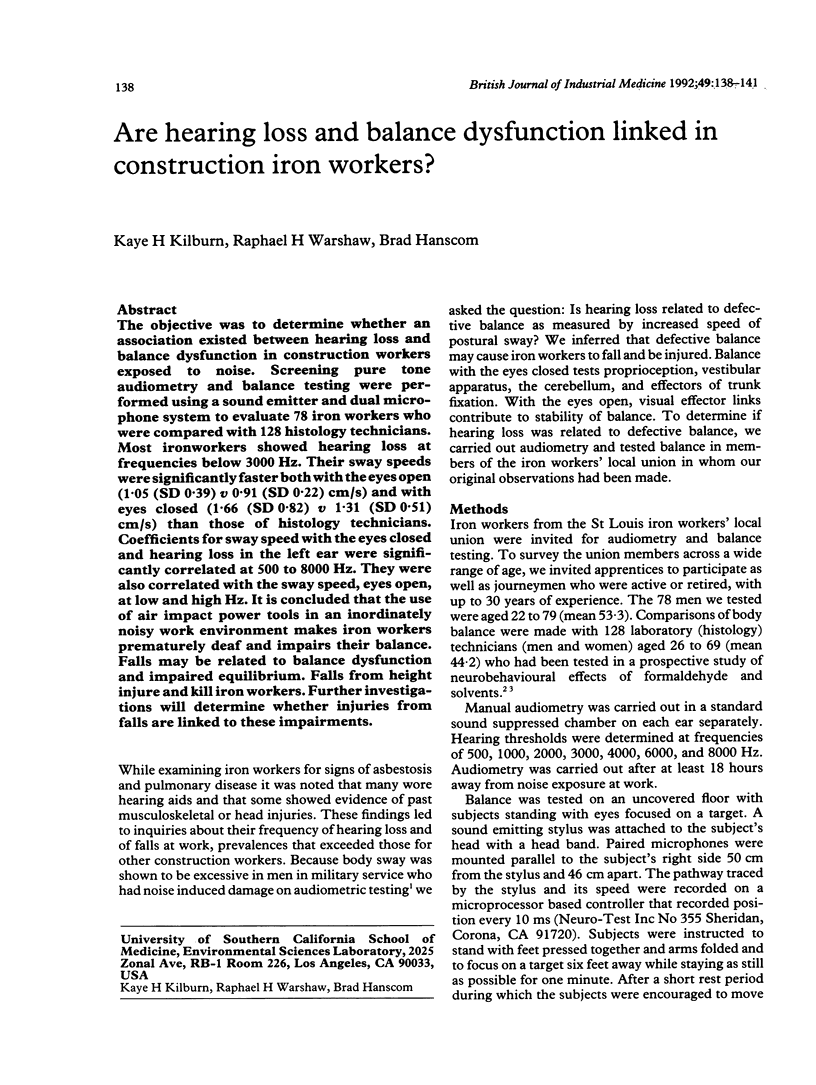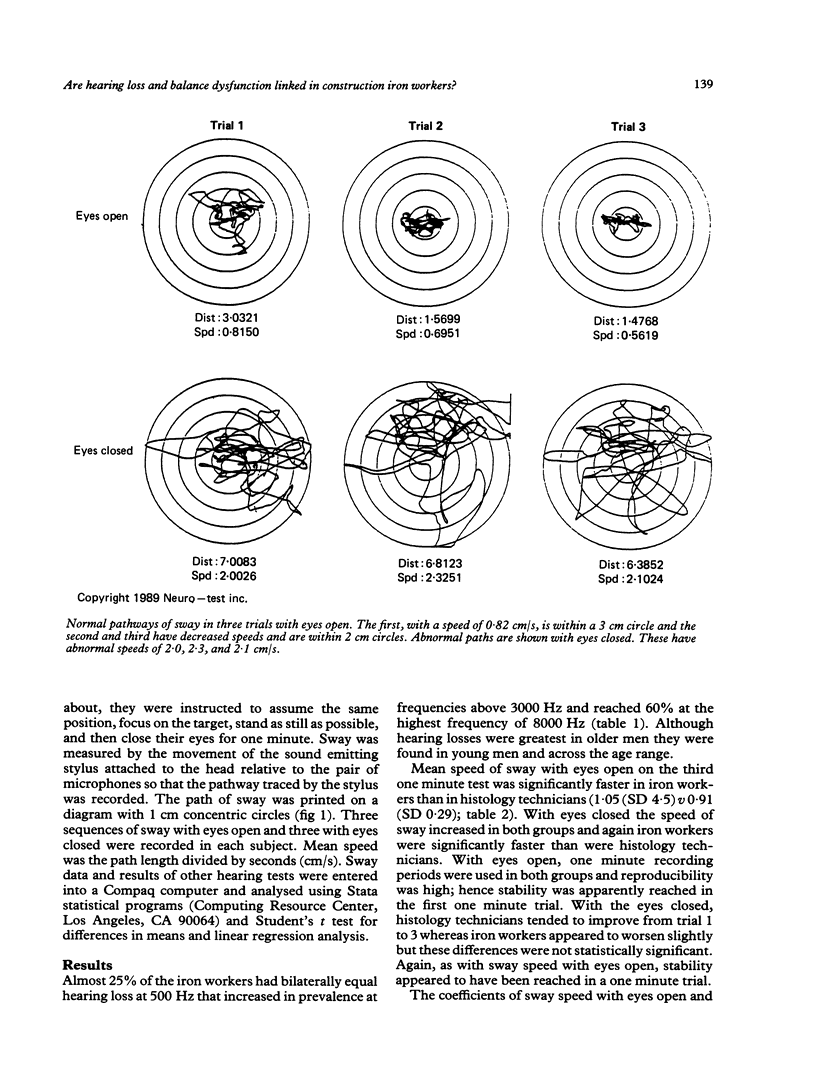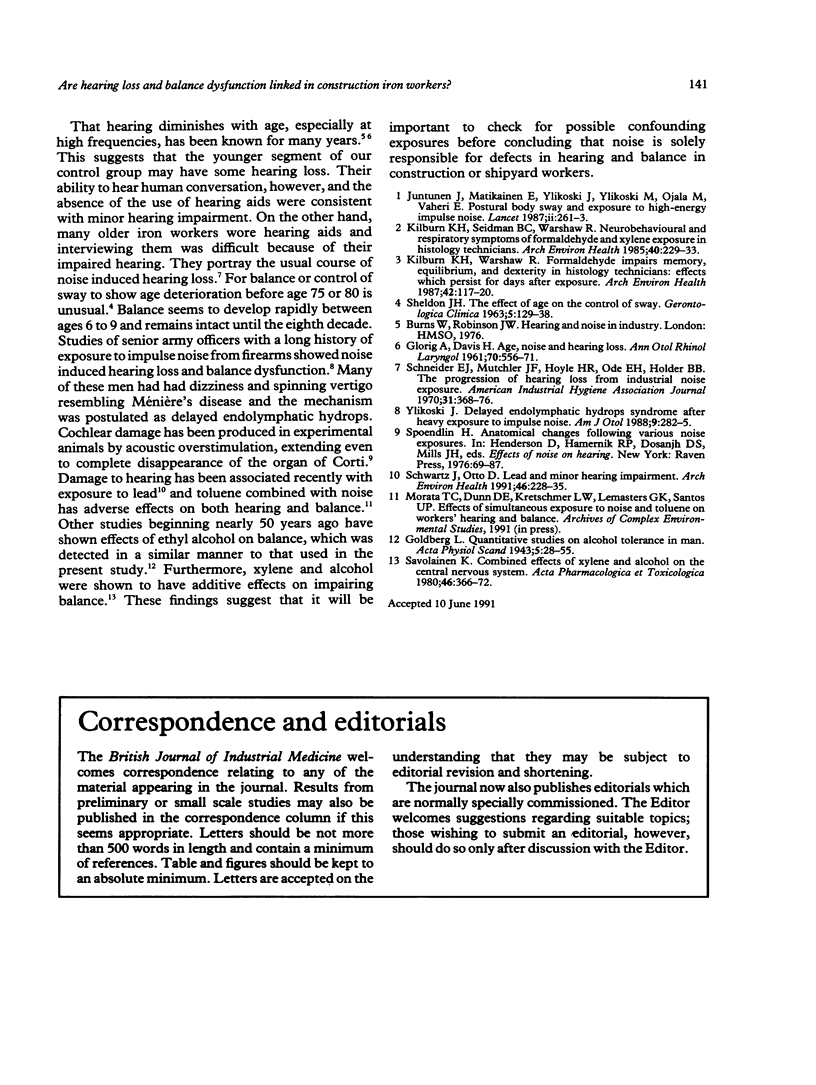Abstract
The objective was to determine whether an association existed between hearing loss and balance dysfunction in construction workers exposed to noise. Screening pure tone audiometry and balance testing were performed using a sound emitter and dual microphone system to evaluate 78 iron workers who were compared with 128 histology technicians. Most iron workers showed hearing loss at frequencies below 3000 Hz. Their sway speeds were significantly faster both with the eyes open (1.05 (SD 0.39) v 0.91 (SD 0.22) cm/s) and with eyes closed (1.66 (SD 0.82) v 1.31 (SD 0.51) cm/s) than those of histology technicians. Coefficients for sway speed with the eyes closed and hearing loss in the left ear were significantly correlated at 500 to 8000 Hz. They were also correlated with the sway speed, eyes open, at low and high Hz. It is concluded that the use of air impact power tools in an inordinately noisy work environment makes iron workers prematurely deaf and impairs their balance. Falls may be related to balance dysfunction and impaired equilibrium. Falls from height injure and kill iron workers. Further investigations will determine whether injuries from falls are linked to these impairments.
Full text
PDF



Selected References
These references are in PubMed. This may not be the complete list of references from this article.
- GLORIG A., DAVIS H. Age, noise and hearing loss. Ann Otol Rhinol Laryngol. 1961 Jun;70:556–571. doi: 10.1177/000348946107000219. [DOI] [PubMed] [Google Scholar]
- Juntunen J., Matikainen E., Ylikoski J., Ylikoski M., Ojala M., Vaheri E. Postural body sway and exposure to high-energy impulse noise. Lancet. 1987 Aug 1;2(8553):261–264. doi: 10.1016/s0140-6736(87)90840-3. [DOI] [PubMed] [Google Scholar]
- Kilburn K. H., Seidman B. C., Warshaw R. Neurobehavioral and respiratory symptoms of formaldehyde and xylene exposure in histology technicians. Arch Environ Health. 1985 Jul-Aug;40(4):229–233. doi: 10.1080/00039896.1985.10545924. [DOI] [PubMed] [Google Scholar]
- SHELDON J. H. The effect of age on the control of sway. Gerontol Clin (Basel) 1963;5:129–138. doi: 10.1159/000244784. [DOI] [PubMed] [Google Scholar]
- Savolainen K. Combined effects of xylene and alcohol on the central nervous system. Acta Pharmacol Toxicol (Copenh) 1980 May;46(5):366–372. doi: 10.1111/j.1600-0773.1980.tb02468.x. [DOI] [PubMed] [Google Scholar]
- Schneider E. J., Mutchler J. E., Hoyle H. R., Ode E. H., Holder B. B. The progression of hearing loss from industrial noise exposures. Am Ind Hyg Assoc J. 1970 May-Jun;31(3):368–376. doi: 10.1080/0002889708506259. [DOI] [PubMed] [Google Scholar]
- Ylikoski J. Delayed endolymphatic hydrops syndrome after heavy exposure to impulse noise. Am J Otol. 1988 Jul;9(4):282–285. [PubMed] [Google Scholar]


